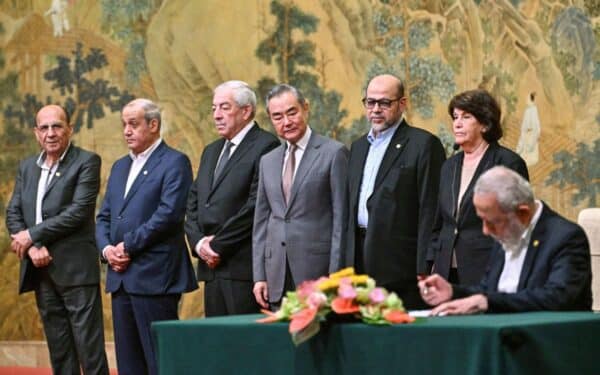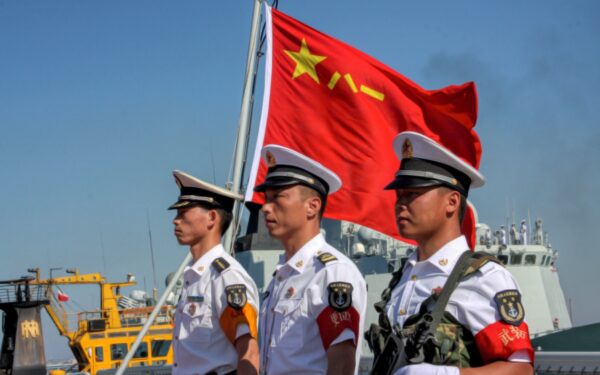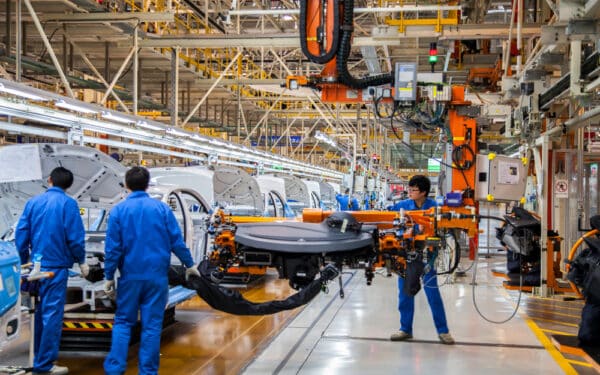Hundreds of people gathered on the shore of the tropical island of Hainan on Sunday, shielding themselves from the sun with umbrellas and listening as an announcer counted down to China’s largest ever space launch. The Long March 5-B rocket blasted off from China’s southernmost province while much of the Western world was still asleep, and the laboratory module it carried has since docked with the country’s new Tiangong III space station – meaning ‘Heavenly Palace’ in Mandarin.
The 23-ton module is the second to slot into place, orbiting 425 kilometers above the Earth, and is kitted out with equipment that will allow Beijing’s astronauts to carry out ecological and biotechnological experiments in zero gravity. Until now, its crew of three have been confined to their quarters on a core module, launched over a year ago. However, within weeks they could be overseeing a third unit docking as part of their ambitious mission plans.
Tiangong III is the third space station China has put into orbit in just over a decade, and the country has its sights set on carrying out more than 50 rocket launches by the end of this year alone. A few days before the new laboratory went airborne, officials confirmed they had blasted off four separate satellites in just two days.
“China has attached great importance to space exploration as well as innovation in space science and technology, and wants to use these achievements to create a better future for mankind,” Chinese President Xi Jinping said in 2017. Since then, his government has invested nearly £7.5 billion in funds to push the outer limits of the cosmos, bolster its communications capabilities and, analysts say, give it advanced military and espionage capabilities.
Last October, US officials sounded the alarm after China tested an advanced hypersonic missile that orbited the globe before honing in on a target. While American intelligence officials say that the weapon missed the mark by tens of kilometres, it took observers by surprise and showcased capabilities that few expected Beijing to have in its arsenal. “We have no idea how they did this,” an anonymous insider told the FT at the time.
Then, in April, Chinese researchers unveiled an artificial intelligence network that they say could turn a network of low-cost communications satellites into a spy super-weapon, enabling operators to track everything from troop movements to individual cars undetected from above. The government has put dozens of espionage satellites into orbit in recent years, and already has one of the most significant monitoring capabilities in the world.
There is every sign that Beijing will use those capabilities to its advantage. Earlier this year, Taiwanese news reported that China’s space agency, the CNSA, had included pictures of the breakaway island’s capital, Taipei, as part of a demonstration of celebrating the launch of what it calls its “highest-resolution remote sensing satellite” yet. Tensions between the two have escalated in recent months, as both sides stage military drills and experts warn Beijing could be considering launching an invasion.
At the same time, China has sought to monetise its growing role in space, offering lucrative partnerships for launches to countries and companies unable to secure their own rockets. Work has already begun on the nation’s first commercial spaceport, and its two launchpads are expected to begin operations in 2024.
Until now, around three quarters of all the humans ever put into space have been either American astronauts or cosmonauts from Russia and the Soviet Union before it. With its rapid foray into orbit, China is evidently seeking to assert itself as a space superpower, just as both of the main players seem to be slipping into decline.
Hit by sanctions over its full-scale invasion of Ukraine, it is unclear whether Moscow’s chronically underfunded space industry can even continue to operate, despite serving as the control centre for the International Space Station (ISS), which is expected to be decommissioned in 2030.
The US, meanwhile, had cut the budgets of NASA to the point that it was forced to rely on Russian launches to ferry its crews to the ISS, having no shuttle program of its own. Now, with Elon Musk’s SpaceX picking up the slack, it is outsourcing more and more work to private firms.
Beijing’s dominance in high-tech industries like nuclear power and telecommunications has already given Western leaders headaches about national security and sensitive industries. Just this week, a series of warnings by the FBI have come to light, with fears Chinese-made telephone mast equipment could disrupt the US’s nuclear command signals. President Joe Biden’s White House has now launched a probe into Chinese firm Huawei over the claims.
In his flagship foreign policy launch on Monday, Conservative Party leadership candidate and prospective Prime Minister, Rishi Sunak, declared that “China and the Chinese Communist Party represent the largest threat to Britain and the world’s security and prosperity this century.” In a series of security pledges, he argued for an “international alliance of free nations” to take on Beijing in the arena of technology security.
However, given how dependent many Western nations already are on Chinese telecommunications, extricating even the closest partners of the US and UK from its network of influence would be a tall order. As the country moves to become a major space power as well, the costs of falling out with Xi are only going to skyrocket further.




